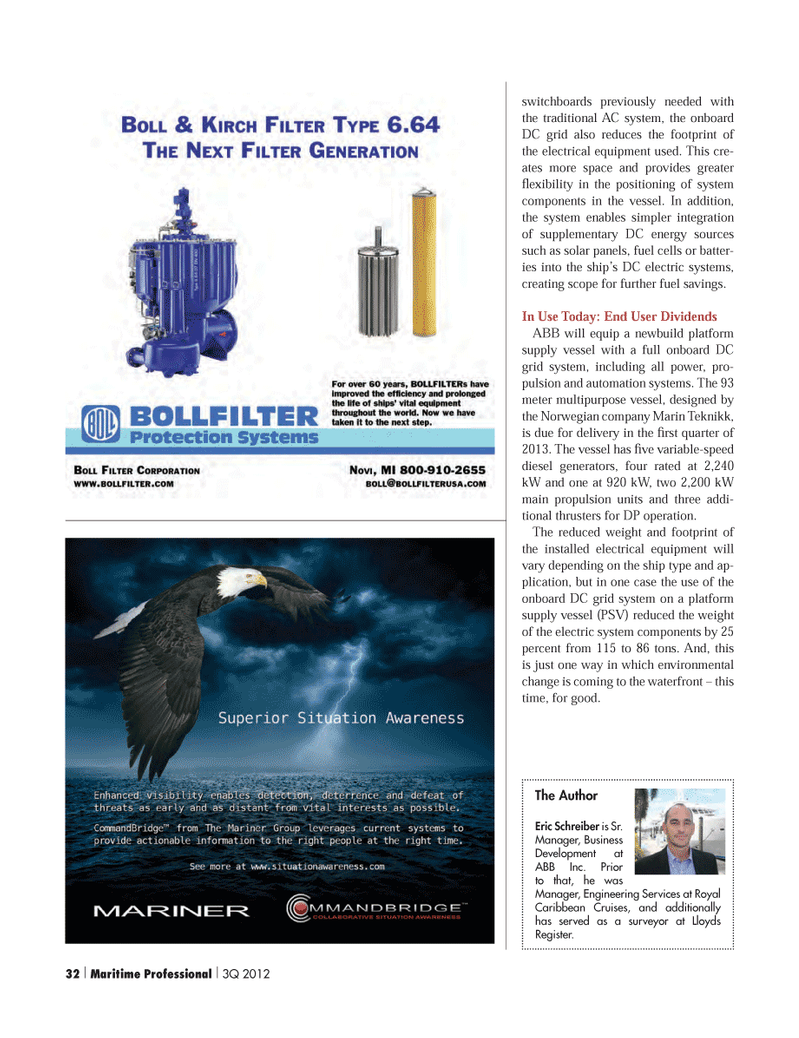
Page 32: of Maritime Logistics Professional Magazine (Q3 2012)
Classification Societies, Quality & Design
Read this page in Pdf, Flash or Html5 edition of Q3 2012 Maritime Logistics Professional Magazine
switchboards previously needed with the traditional AC system, the onboard DC grid also reduces the footprint of the electrical equipment used. This cre- ates more space and provides greater ß exibility in the positioning of system components in the vessel. In addition, the system enables simpler integration of supplementary DC energy sources such as solar panels, fuel cells or batter- ies into the shipÕs DC electric systems, creating scope for further fuel savings. In Use Today: End User Dividends ABB will equip a newbuild platform supply vessel with a full onboard DC grid system, including all power, pro- pulsion and automation systems. The 93 meter multipurpose vessel, designed by the Norwegian company Marin Teknikk, is due for delivery in the Þ rst quarter of 2013. The vessel has Þ ve variable-speed diesel generators, four rated at 2,240 kW and one at 920 kW, two 2,200 kW main propulsion units and three addi-tional thrusters for DP operation.The reduced weight and footprint of the installed electrical equipment will vary depending on the ship type and ap- plication, but in one case the use of the onboard DC grid system on a platform supply vessel (PSV) reduced the weight of the electric system components by 25 percent from 115 to 86 tons. And, this is just one way in which environmental change is coming to the waterfront Ð this time, for good. The Author Eric Schreiber is Sr. Manager, Business Development at ABB Inc. Prior to that, he was Manager, Engineering Services at Royal Caribbean Cruises, and additionally has served as a surveyor at Lloyds Register. 32 | Maritime Professional | 3Q 2012

 31
31

 33
33
